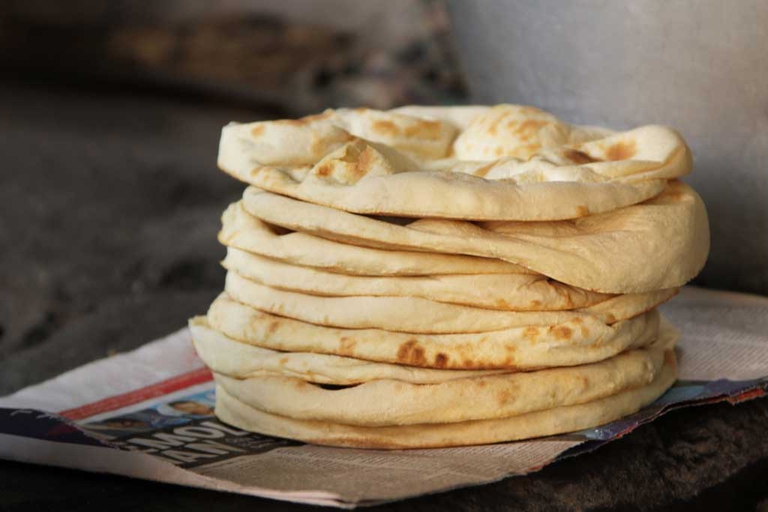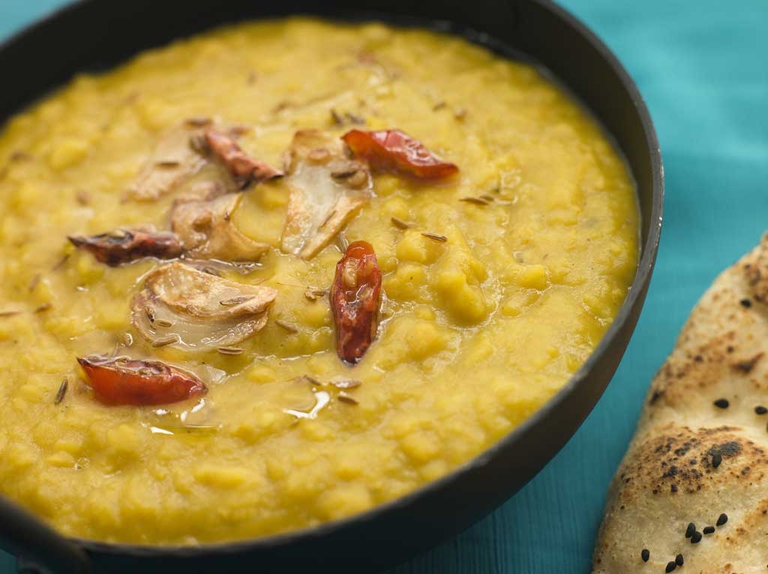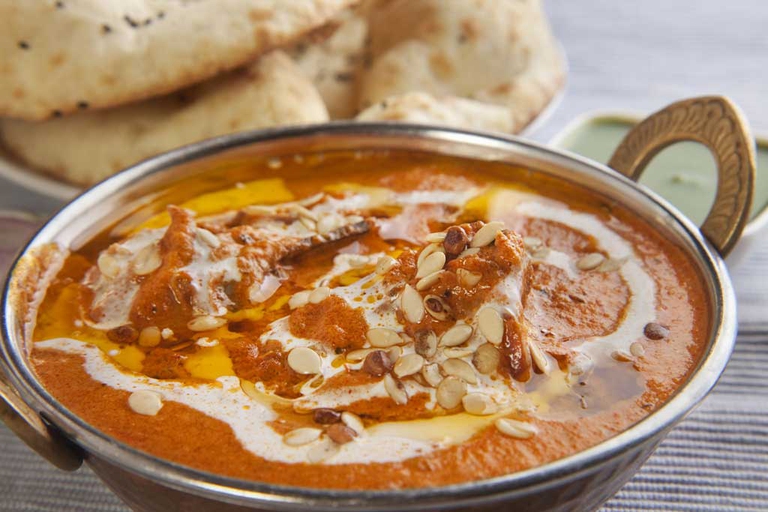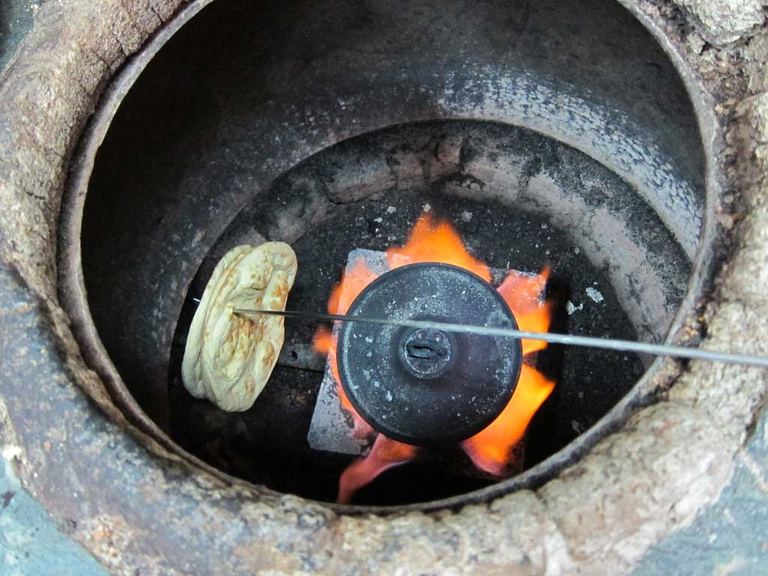
Factory farming conditions and antibiotic-resistant pathogens emerging as a result of them pose an existential threat to humans in the form of zoonotic diseases. Why it’s time to produce and consume food more thoughtfully.
Ayurveda, one of the most ancient types of folk medicine, includes a theory on nutrition based on six fundamental flavours and three kinds of individual temperaments. The six flavours are sweet, sour, salty, bitter, pungent and astringent; the three types of dosha are Vata, Pitta and Kapha (or a combination of these) and are generated
Ayurveda, one of the most ancient types of folk medicine, includes a theory on nutrition based on six fundamental flavours and three kinds of individual temperaments. The six flavours are sweet, sour, salty, bitter, pungent and astringent; the three types of dosha are Vata, Pitta and Kapha (or a combination of these) and are generated by natural elements: earth, water, fire, air and ether. Indians define their nutrition according to their dominant dosha.

The Indian tradition divides food into three groups: whole cereals, rice, nuts, sprouts, fruits, fresh vegetables and honey that improve better abilities and high-level faculties, relieve the body and keep it in shape; cereals, fresh cheese, dairy products, legumes, sweets, chocolate and sugar that provide energy and increase strength and passion; meat, fish, eggs, alcohol, mushrooms, onions and garlic that weigh you down, worsen your mental clarity and make you less sensitive.

Talking about a unique culinary tradition in such a big country is impossible: the countless regions, dialects, cultures, creeds have determined and influenced the development of different culinary traditions, making of India a place where it is difficult to define a national dish. Specialities include dal, a mixture of lentils and vegetables usually served with rice or chapati; curry, a dish whose main ingredient is a spicy sauce and that can contain chicken, mutton, fish and vegetables; meat or fish tandoori macerated in yoghurt; paneer, fresh cheese with vegetables and, finally, for a typical Indian breakfast, dosai, a sort of crepe made of lentil and rice flour.

To make things easier, Indian textbooks distinguish northern and southern culinary traditions, two refined and creative cuisines dominated by social and religious rites. Spices, tea and rice are the most common ingredients everywhere and are served with either vegetarian or meat-based dishes. In northern India people’s diet is mainly vegetarian and the inhabitants love cooking with ghee, a type of clarified butter. There are many kinds of bread that can replace rice and people prefer to cook meat in a grill. They don’t love sauces, while yoghurt is widely consumed and used to make some dishes less hot. Tandoori, a very appreciated cooking technique in western countries, was invented in Delhi, northern India. Tandoori refers to food baked in tandoors, clay ovens that look like big barrels.

Vegetarian cuisine is typical of southern India. It is based in rice and vegetables, hot ingredients and spices. A vegetarian diet can be strict, i.e. without meat, fish and eggs (that followed by jainists, brahmins and some Vishnu followers) or flexible (it doesn’t allow only a few types of meat and fish that are considered impure).
Siamo anche su WhatsApp. Segui il canale ufficiale LifeGate per restare aggiornata, aggiornato sulle ultime notizie e sulle nostre attività.
![]()
Quest'opera è distribuita con Licenza Creative Commons Attribuzione - Non commerciale - Non opere derivate 4.0 Internazionale.
Factory farming conditions and antibiotic-resistant pathogens emerging as a result of them pose an existential threat to humans in the form of zoonotic diseases. Why it’s time to produce and consume food more thoughtfully.
The world of cinema recognises the link between food choices and the climate crisis by offering vegan menus for awards season events, including at the most important of them all: the Oscars.
Let’s look at the reasons behind the growth of veganism in India, as a small yet vocal section of the population turns towards this diet and lifestyle in the largest milk producing country in the world.
by Jeffrey Y. Campbell, Manager of the Forest and Farm Facility at FAO In the Ecuadorian Amazon, Kichwa farmers grow dozens of products on tiny parcels of land. Their lands hum with biodiversity, yielding nutritious foods that have sustained families for generations. Wandering among fruit and nut trees and crops, these indigenous agroforesters fill their baskets
Mint has many health benefits, but in food it’s often accompanied by artificial green colourings. Instead, Galatea has created a green mint ice cream in a completely natural way.
We’re talking about Galatea, a company that produces semi-finished products for artisanal ice creams using high quality ingredients, natural colouring, excluding thickeners and hydrogenated fats, respecting the environment and supporting the less fortunate.
The mad rush to fake food, like fake meat made with genetically-modified soy, ignores the importance of the diversity of our foods and culinary cultures. It’s a recipe to accelerate the destruction of the Planet and our health.
Like with all foods, the quality of an ice cream can be discerned by reading its label. An expert explains how to do this, and tells us how their company steers clear of chemicals, using only natural ingredients to produce an excellent and “free” ice cream.
Quality ingredients, no artificial colouring and hydrogenated fats. These are the main features of a great ice cream. But what makes an ice cream parlour “good”, i.e. sustainable?







